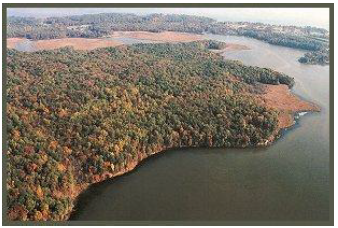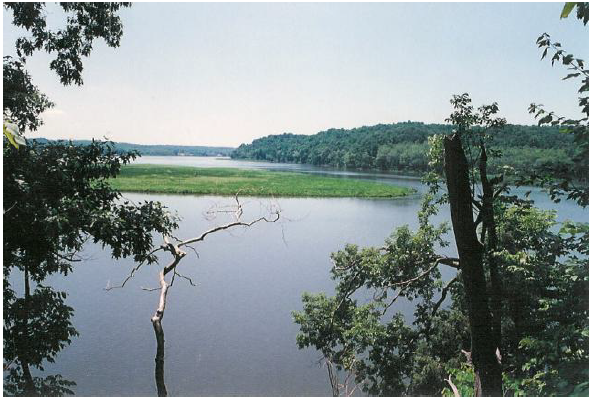Crows Nest

Crow’s Nest is a nearly 4,000 acre peninsula in Stafford County, Virginia. It got its name from a three-masted schooner, The Crow, which was anchored there in the mid-1800s. The peninsula is roughly bounded by Accokeek Creek to the north, Potomac Creek to the South (just as they feed into the Potomac River), and by Brooke Road to the East. Crow’s Nest is rich in history and an ecological marvel.
The Potomacs, Native Americans whose descendants still reside in Stafford County, originally inhabited Crow’s Nest. Pocahontas, Powhatan’s most famous daughter, was kidnapped in 1613 by Capt. Samuel Argall when she was lured onto his ship, anchored off Crow’s Nest in Potomac Creek.
The land comprising Crow’s Nest was originally granted to Col. Gerard Fowke. In 1662, Raleigh Travers received a patent for 3,540 acres on Potomac Creek, encompassing what is now the heart of Crow’s Nest. A large brick house, “Crow’s Nest,” was built on a high ridge that paralleled Potomac Creek. The home was named after The Crow, a black sailing ship owned by the Travers family. It was harbored in Potomac Creek.
Peter Daniel (1706-1777) married Sarah Travers (1717-1788), daughter of Raleigh Travers. An advocate of freedom from England, he was the first to sign a protest against the Stamp Act. The Daniels family cemetery is located in Crow’s Nest, close to Crow’s Nest point. President Martin Van Buren was a friend of Peter Vivian Daniel, and may have visited the area.
Supreme Court Justice Peter Vivian Daniel (1784-1860) and diplomat and Civil War editor John Moncure Daniel were born in Crow’s Nest. Like many such properties, Crow’s Nest plantation was destroyed during the Civil War. Union troops were encamped throughout the Crow’s Nest peninsula. Many fierce battles and heroic construction efforts took place as opposing troops built, destroyed and rebuilt supply bridges across Potomac Creek.
Crow’s Nest is a unique wildlife habitat. It is home to nesting bald eagles and over 1,000 blue herons. It also plays a critical role in supporting migratory bird populations. In 1999, the U.S. Fish and Wildlife Service identified fifty-seven species of neotropical birds that landed there during the Spring migration.
Crow’s Nest is a highly significant and beautiful place and the topography of Crow’s Nest is quite varied. The high, narrow peninsula rises 160 feet above the tidally influenced Potomac and Accokeek Creeks, and is deeply dissected on both its northern and southern sides by a series of ravines cutting steeply down to the bordering creeks. The Crow’s Nest Natural Area Preserve supports:
- 750 acres of tidal and non-tidal wetlands. The wetlands on the Crow’s Nest peninsula account for 60 percent of all the marshes in Stafford County, and
- represent some of the best examples of diverse and intact wetland habitats in the Potomac River drainage.
- 21 miles of stream, riparian and wetland buffer;
- 2,200 acres of mature hardwood forest including two forest types that are recognized as globally rare by DCR’s Natural Heritage Program;
- nesting bald eagles, habitat for the federally listed short-nose sturgeon, and habitat for twenty-two plant species that are significant for the Coastal Plain of Virginia;
- habitat for about 60 species of neotropical migratory songbirds, nearly 60 percent of which are experiencing population declines, including ten species that are high global priority species of Partners In Flight;
- spawning, nursery and/or feeding habitat for 49 species of interjurisdictional fish and seven species of mussels and commercially valuable shellfish;
- a property that has played an important role in the Native American, Colonial and Civil War histories in Virginia.
Sources:
- Conner, Al. A History of Our Own; Stafford, Virginia. Virginia Beach: Donning Company Publishers. 2003.
- Wiggins, Hal. A Field Guide to Crow’s Nest. King George, VA: Black Cat Press, 2008.
- http://www.savecrowsnest.org/about_crow’s_nest.htm
- http://www.dcr.virginia.gov/natural_heritage/natural_area_preserves/crowsnest.shtml


